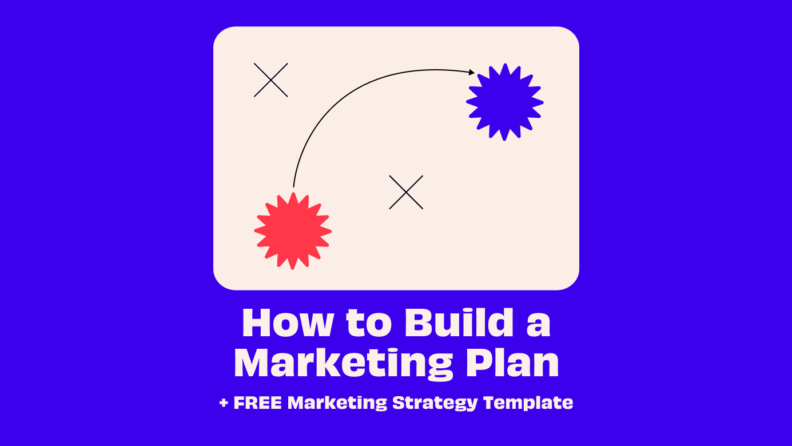Imagine setting out to sail across the ocean to another continent—with intuition alone. Without a detailed strategy, it would be a miracle if you made it to your destination.
While marketing isn’t an expedition across the sea with life-or-death consequences, you likely have big goals in mind for your business. The reality is that your marketing team’s success relies heavily on a strategic plan rather than gut feelings.
That’s why a marketing plan is crucial. While it isn’t easy to come up with a roadmap to success, marketing plan templates can help you simplify and systematize the process to ensure consistent results.
And while it may seem intimidating to draft a marketing strategy template, you don’t need to worry. We’ll walk you through the exact steps you need to take to create your own customized plan so you can get better results in your business. Plus, we’ll even include a free plug-and-play template you can use to immediately craft your plan (and it’s designed to be presentation-ready).
Get Your Free Copy of The CMO's Marketing Strategy Template
What Is a Marketing Strategy?
A marketing strategy for tech companies is a business’s plan to reach its target customers and convert them into paying customers. A marketing plan includes your branding, value proposition, key messaging, target market data, competitor research, and more.
A well-thought-out marketing strategy will always include the four P’s of marketing: product, price, place, and promotion.
In simple terms, your marketing strategy is a blueprint your marketing team can use to design and execute their marketing goals.
The foundation of every successful marketing plan revolves around a company’s brand identity and value proposition. How successful a strategy is will be determined by your overall goals. In most cases, this means creating a competitive advantage over other companies to increase revenue and profits.
What Is a Marketing Strategy Template?
The most effective marketing tactics will be built upon a framework known as a marketing strategy template. A marketing strategy template is a starting point you can use to create new strategies that align with your company’s value proposition.
How to Build a Marketing Strategy
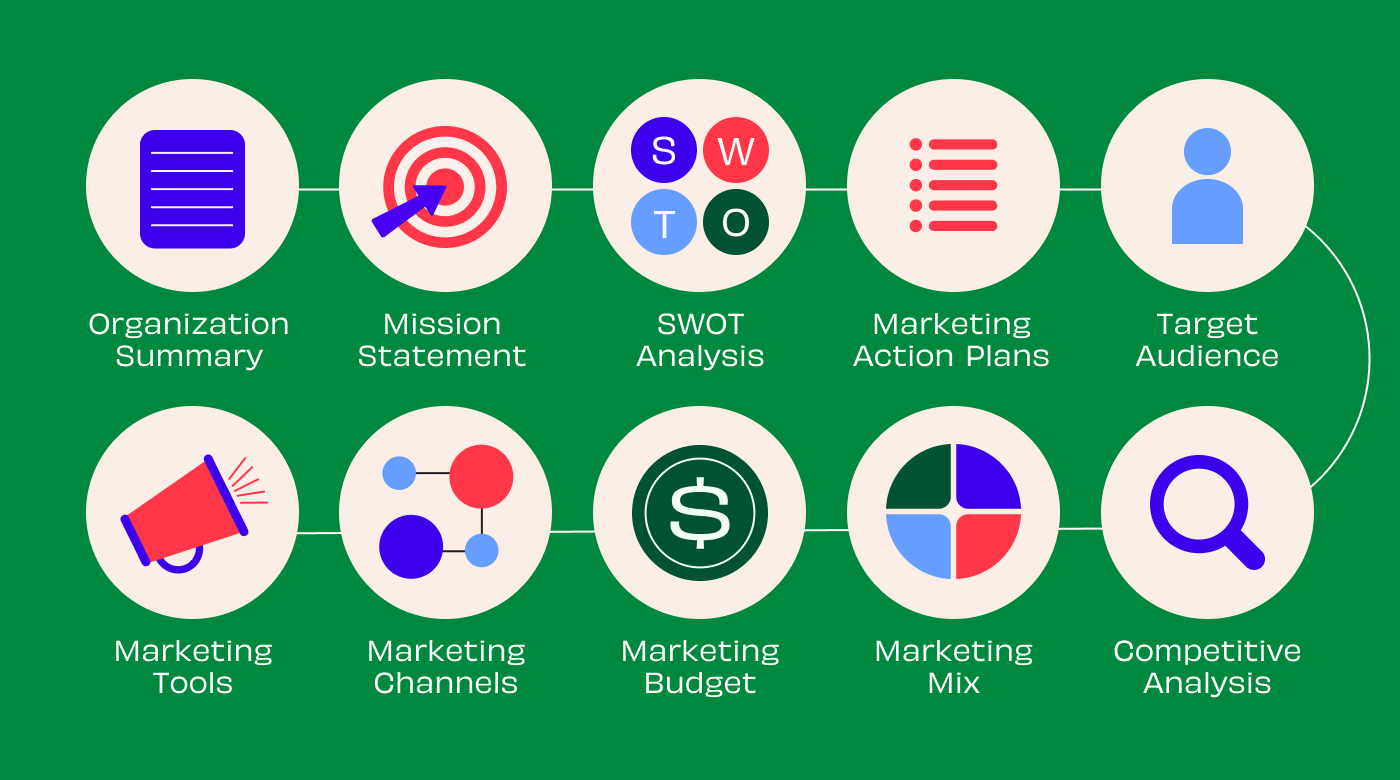
The marketing strategy outlined below can help you craft a plan to get stakeholders on board, meet business objectives and grow your business. If you have the budget, you can go through this entire process using marketing planning software.
While you decide, here are the most important elements every effective marketing strategy includes:
1. Organization Summary
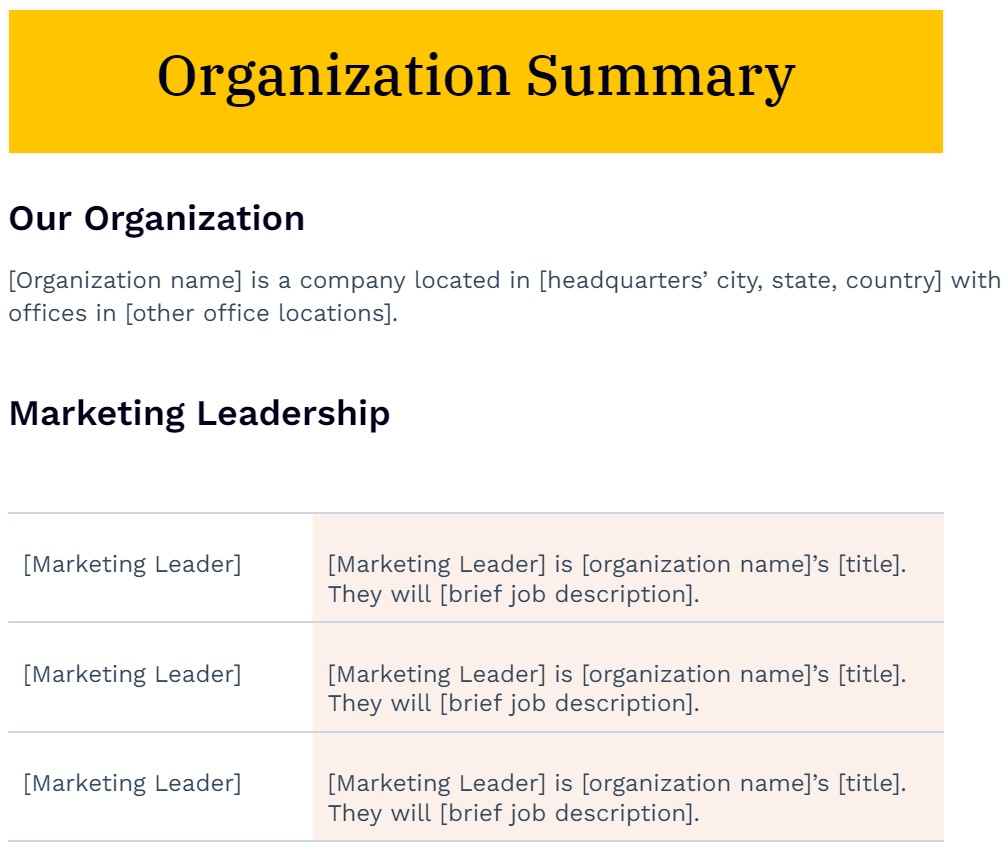
First, take a step back from the day-to-day and look at your organization.
In the “Summary,” include essential information about your business so anyone can learn about your organization — including key stakeholders and your direct superiors.
It should include your organization’s name, headquarters location, other branch locations, and details about your marketing leadership.
2. Mission Statement
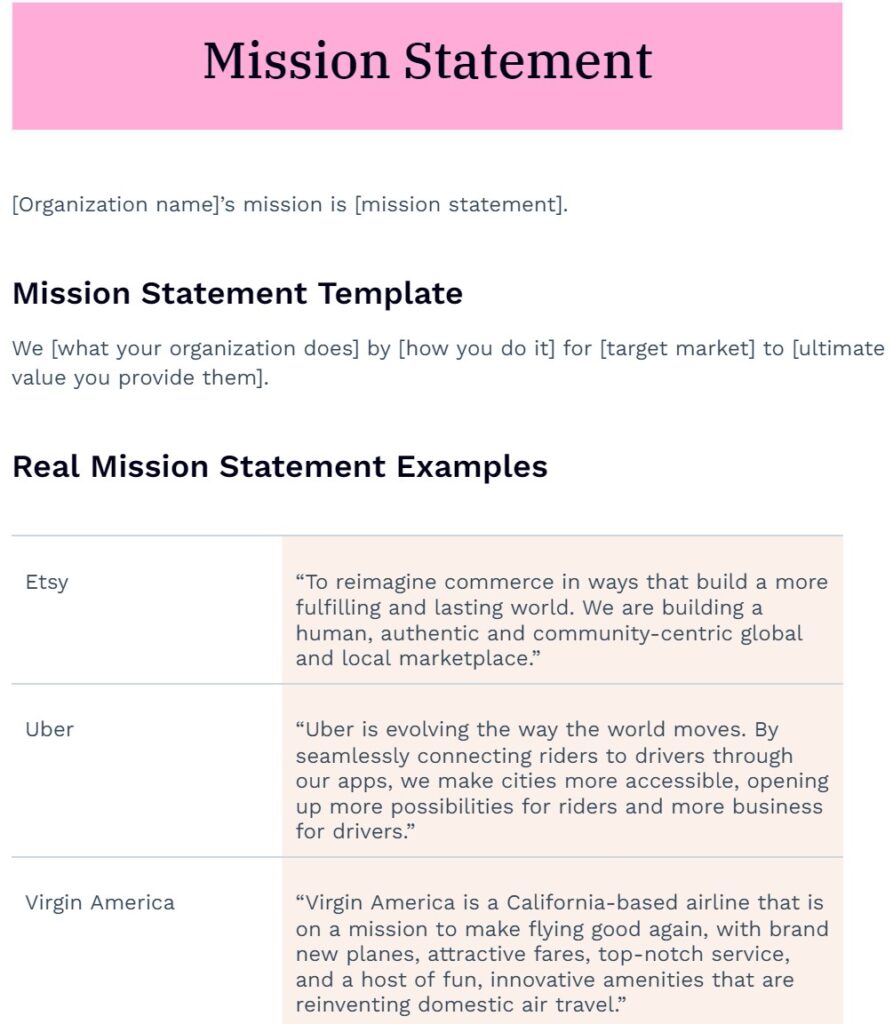
Next, dive into the heart of your organization by writing down your mission statement. If you’re leading a new organization that doesn’t have one yet, or you’re in charge of coming up with a new mission statement, use this template:
We [what your organization does] by [how you do it] for [target market] to [ultimate value you provide them].
Your mission statement will act as a guiding compass for every marketing initiative you implement, so it’s key that you have it front and center.
3. SWOT Analysis
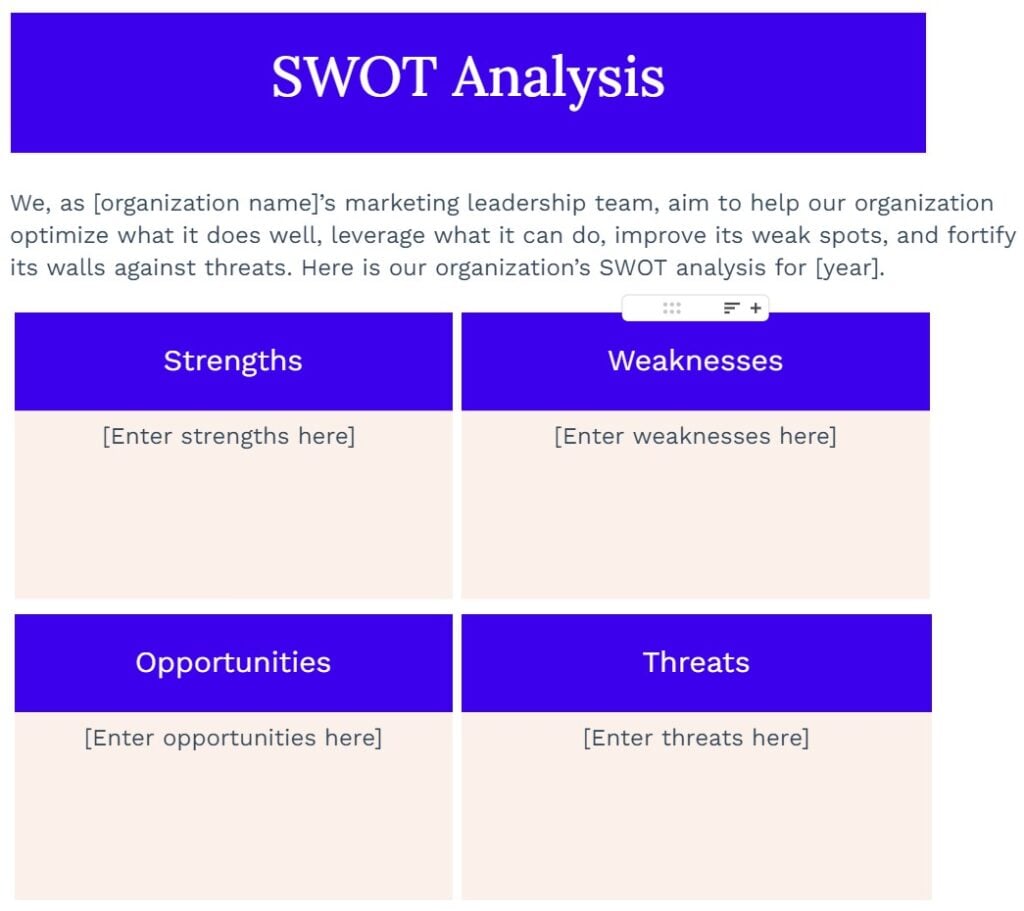
Next, it’s time to conduct a thorough SWOT analysis to assess a few key areas of your business:
- S: Strengths
- W: Weaknesses
- O: Opportunities
- T: Threats
Your SWOT analysis can shed necessary transparency on your business so you can create an effective plan. These are typically done over the course of a few weeks, so don’t worry about spending too much time on this section immediately. As you dive into more market research over time, you’ll be able to fill in more details.
4. Marketing Action Plans
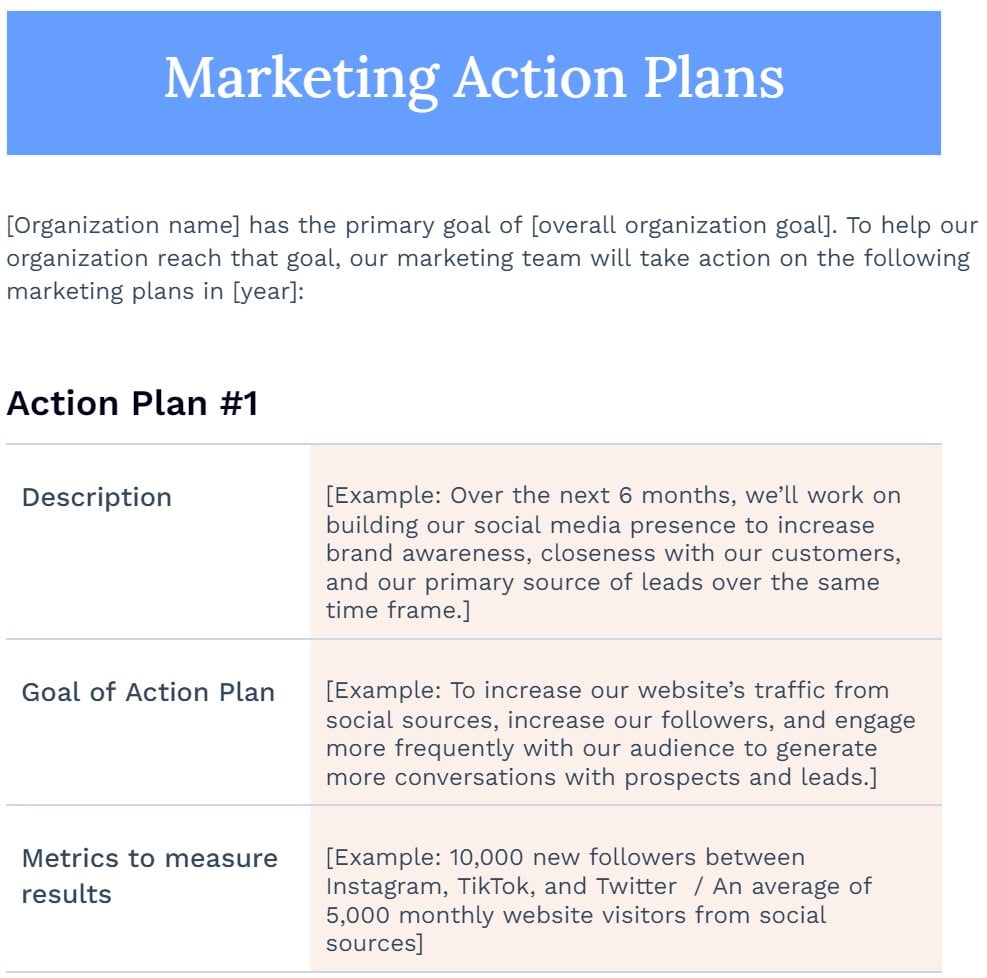
Next, it’s time to come up with some strategic marketing activities. This is where you’ll set your specific marketing objectives and the plan to achieve them.
When writing down your action plans, keep your overall business objectives in mind. But, rather than crafting general business goals, address marketing objectives and key actions you will take to reach them.
For example, for an SEO goal, maybe you plan on creating one new blog post every week to reach 10,000 organic visits per month by the end of the year. Or, for your social media strategy, maybe you want to hit 300,000 views on your TikTok to increase brand awareness by posting a video once per day.
5. Target Audience

Now, you’ll want to create a buyer persona for your ideal customers. Here, you’ll insert any key information you’ve found on your audience through market research. This means including key demographic data, like age, location, and gender. It also means addressing personal challenges, pain points, desires, and wants. The more specific you are, the better.
6. Competitive Analysis
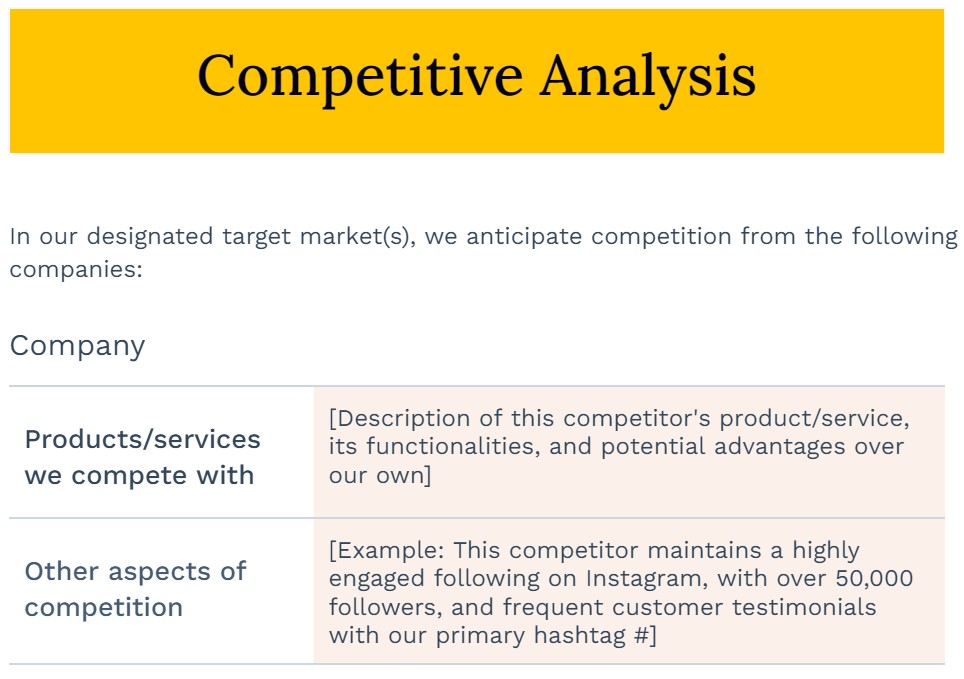
Now, it’s time to address your competition through competitive analysis. Every effective marketing leader will know what the competition is up to. Odds are, you’re after the same target customer, and they have to make a choice about who they’re going to do business with.
You need to conduct a competitor analysis to understand who your top competitors are, their strengths and weaknesses, and how you can differentiate your brand to add more value and create a better offer for your target audience than them.
7. Marketing Mix
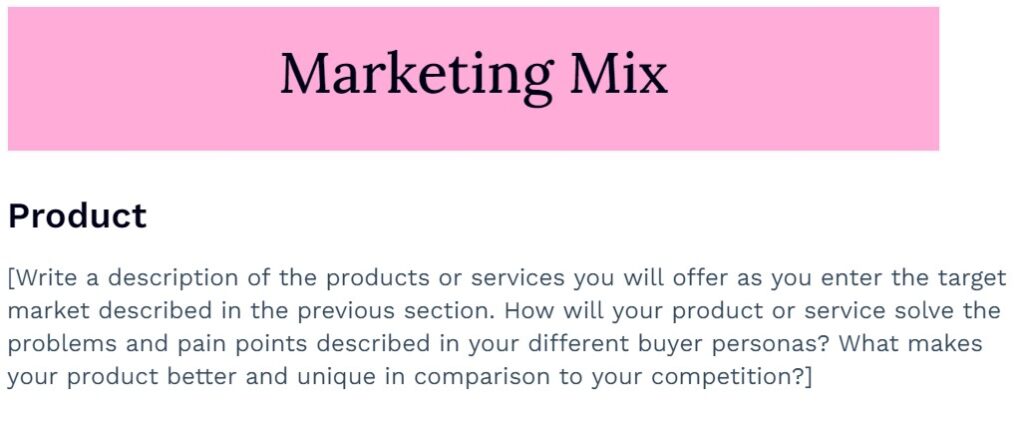
Next, it’s time to create a marketing mix using insights from the above sections to address different elements such as product, price, promotion, people, and more. You can then use this data to solidify your marketing strategy to gain the upper hand on your competition.
8. Marketing Budget
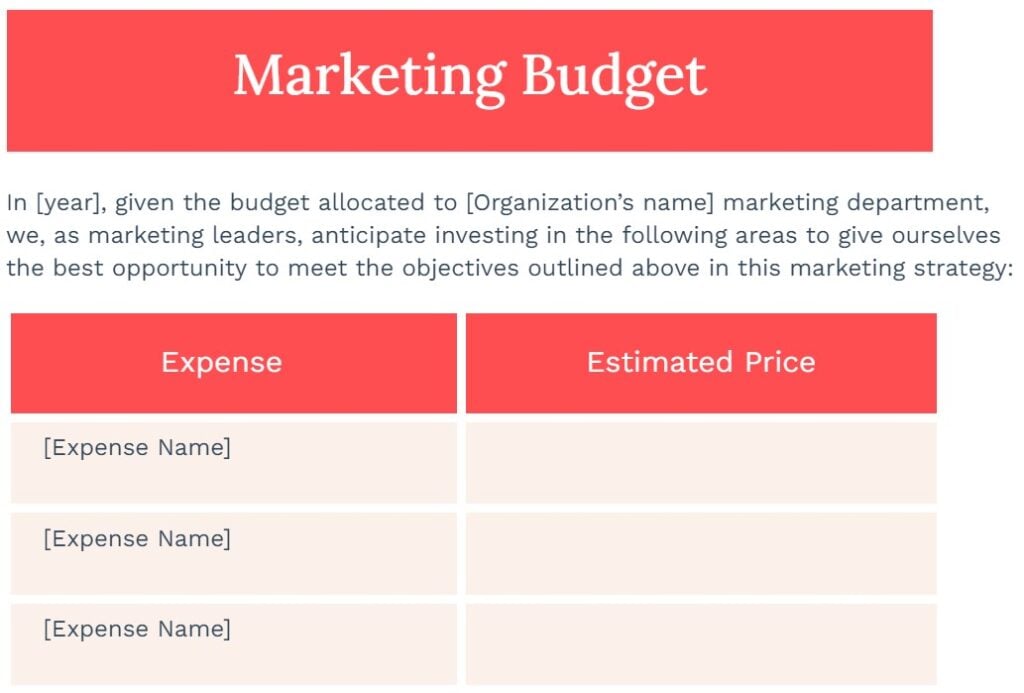
Now, let’s tackle the numbers. In this section, don’t worry about general company financials like revenue or profit margins. We only want to address how you are going to budget the allocated funds into specific marketing campaigns or key purchases.
This could include outsourcing work to subcontractors, paying for advertising, marketing software, or even events.
9. Marketing Channels
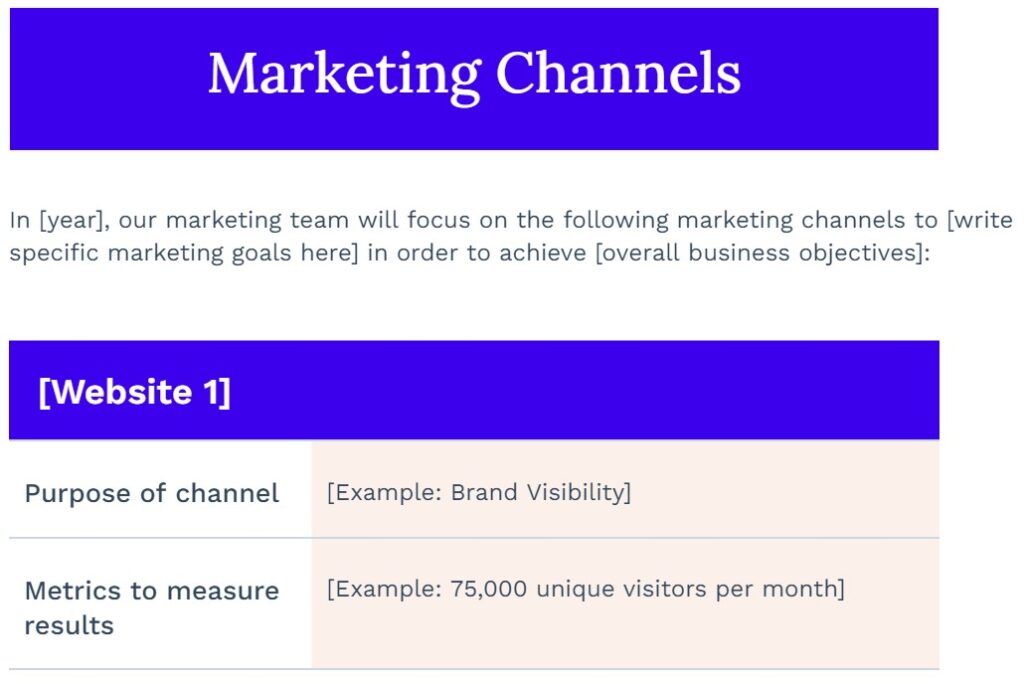
Now, it’s time to focus on all of your marketing channels. List out every channel you currently use and every one you plan on using this year. This could include your website, a specific social media platform, email marketing, pay-per-click ads, or SEO.
This is where you’ll address your plans with your top channels to achieve your marketing goals. Get specific with numbers here. Do you have a specific social media marketing plan? Maybe you have a social media platform in mind, like TikTok or Twitter (recently rebranded as “X”), that you want to take to 10,000 followers?
You should reference section 4, “Marketing Action Plans,” to help fill out this section. But, unlike section 4, you won’t go into too much detail on the marketing activities. Instead, focus on the specific goal that you'll achieve through each channel. And remember, when trying to determine which channels to focus on, think about your ideal customers and where they hang out.
10. Marketing Tools
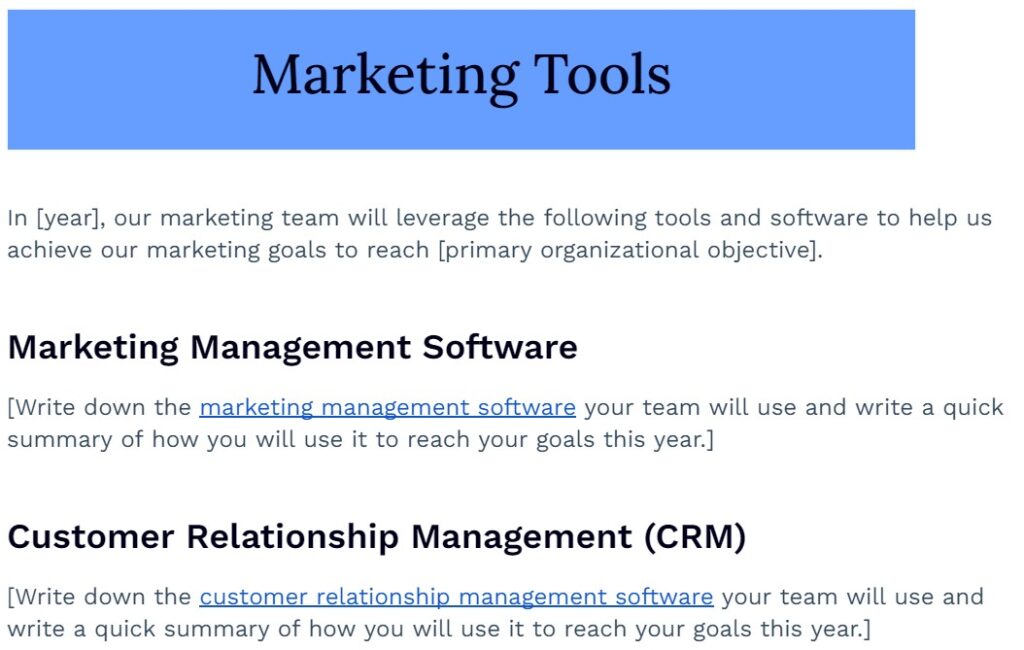
Finally, it’s time to address the technology you’ll need to complete your marketing strategy. List out every marketing tool you use (and write down different technology you plan on using).
This is an essential part of your marketing strategy, as marketing software can be quite an investment from your business’ leadership, so you’ll want to make sure they’re on board and aware of the potential ROI they can offer for your organization.
Remember to write down the tool name, the type of tool it is, and how it'll help you achieve your marketing goals this year.
Get Your Marketing Strategy Template
Do you regularly take a look at your team’s marketing strategy to ensure it’s optimized to meet your objectives?
If not, you should make an effort to review it at least once a year, if not every quarter. A marketing plan is crucial to ensure you’re achieving your goals so your business can thrive. It’s also critical to ensure you’re able to get support in terms of funding and resources throughout the year so you can do your job.
To help you craft your own unique marketing plan, we’ve created a marketing strategy template. In it, simply fill in the blanks, and in no time, you’ll have a complete marketing plan that’s beautifully designed and ready to present.
Get Your Free Copy of The CMO's Marketing Strategy Template Here.

